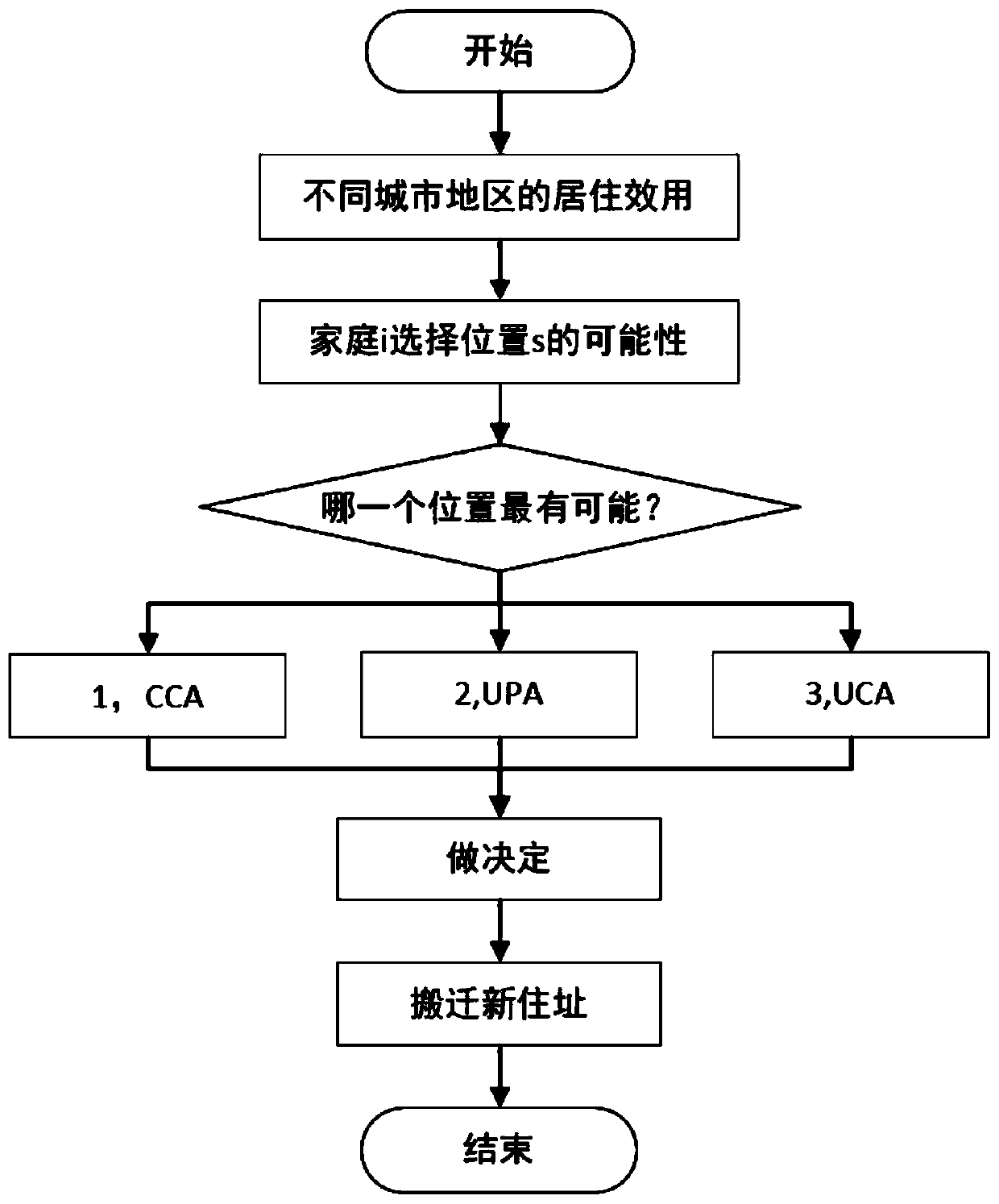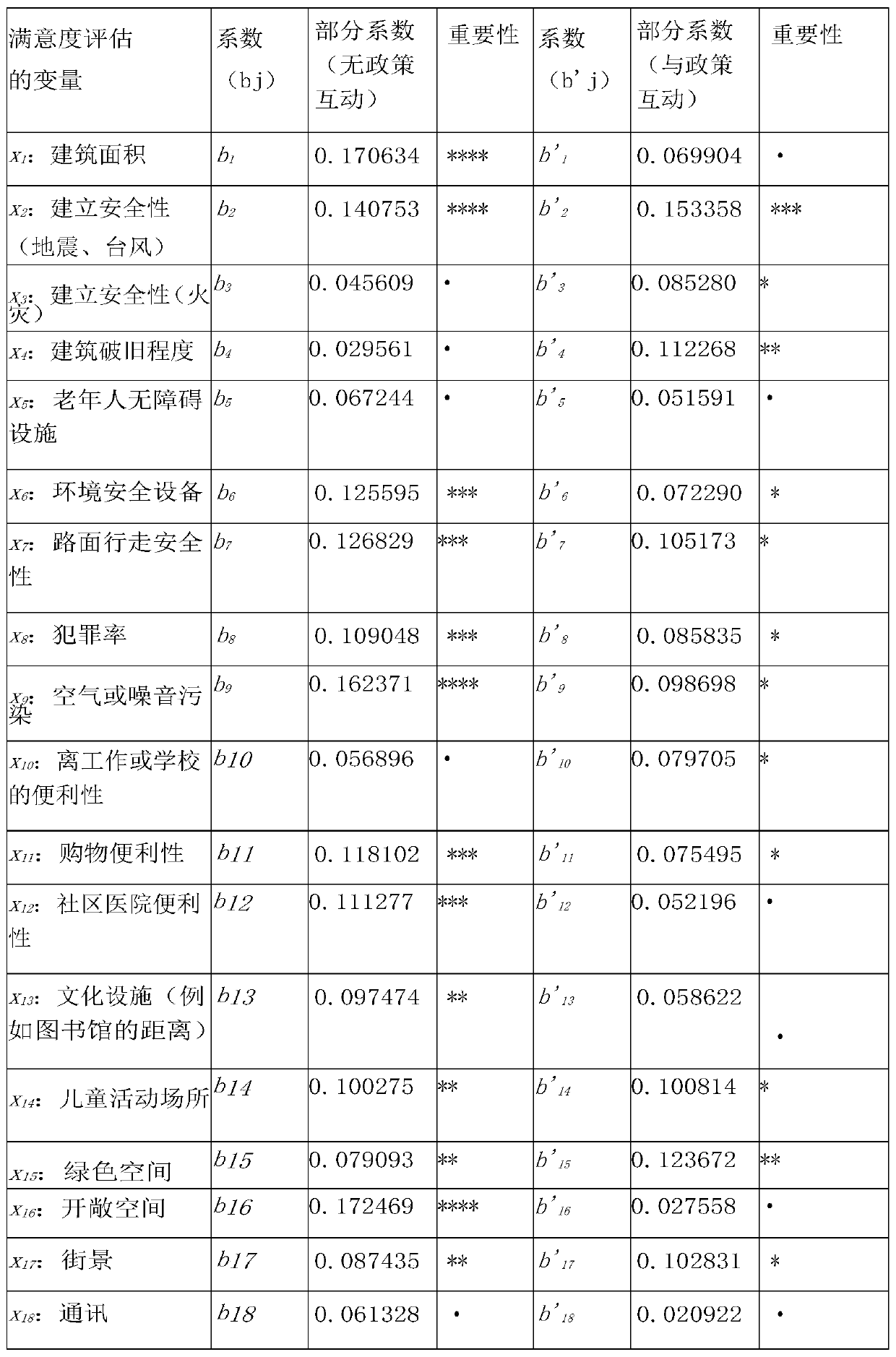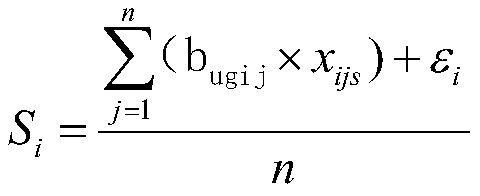Method for establishing multi-agent model for residential area selection
A technology of multi-agent and establishment method, applied in the direction of instruments, data processing applications, resources, etc., can solve the problem of weak attention in the interaction of adjacent subjects, and achieve the effect of good decision-making
- Summary
- Abstract
- Description
- Claims
- Application Information
AI Technical Summary
Problems solved by technology
Method used
Image
Examples
Embodiment Construction
[0048] A method for establishing a multi-agent model of residential location selection, comprising the steps of:
[0049] Step 1: The establishment of the adaptive behavior model of the family agent in the process of residential site selection, including:
[0050] Step 1.1: home agent settings:
[0051] Each family agent has the following attributes: age, marital status, members, savings, income, and transportation;
[0052] Each family agent has seven life cycle stages: birth, marriage, raising children, children leaving home, retirement, single elderly, and death;
[0053] Step 1.2: Judgment of the home agent's satisfaction with the current address:
[0054]
[0055] where n=1,...,18; u=1,...,6 (1)
[0056] 0threshold <4 (2)
[0057] S i >S threshlold (3)
[0058] S i ≤S threshlold (4)
[0059] where S i is family i’s satisfaction with the current residential area, b ugij is the regression coefficient vector of variable j, and u represents the life cycle stage...
PUM
 Login to View More
Login to View More Abstract
Description
Claims
Application Information
 Login to View More
Login to View More - R&D
- Intellectual Property
- Life Sciences
- Materials
- Tech Scout
- Unparalleled Data Quality
- Higher Quality Content
- 60% Fewer Hallucinations
Browse by: Latest US Patents, China's latest patents, Technical Efficacy Thesaurus, Application Domain, Technology Topic, Popular Technical Reports.
© 2025 PatSnap. All rights reserved.Legal|Privacy policy|Modern Slavery Act Transparency Statement|Sitemap|About US| Contact US: help@patsnap.com



